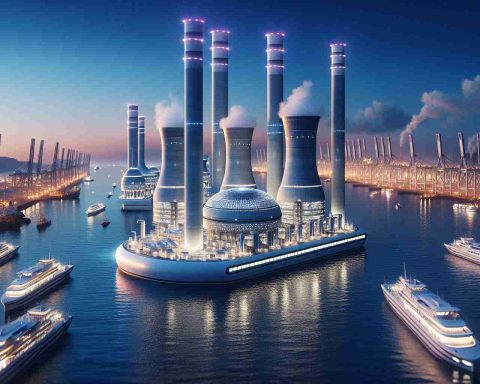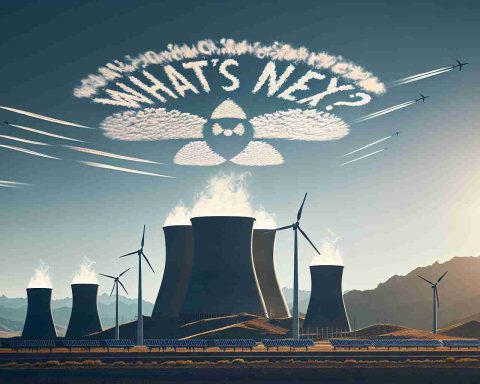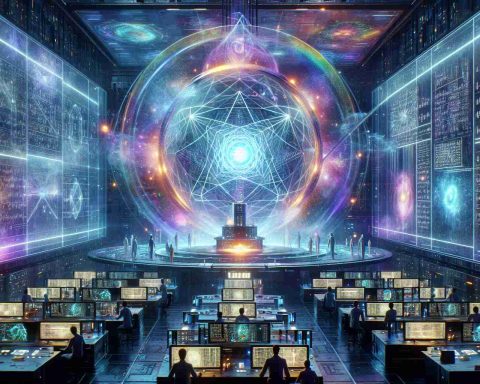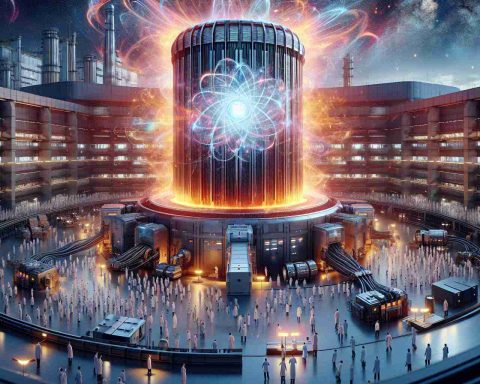- Maryland is considering the ENERGIZE Act, focusing on new nuclear reactors and methane gas facilities.
- Critics highlight potential risks to taxpayer finances and environmental health.
- Environmental and health organizations argue construction of nuclear plants is expensive and slow, with long-term greenhouse gas implications.
- Immediate solutions, like wind and solar energy, are advocated as more effective and cost-efficient alternatives.
- Transitioning away from fossil fuels is crucial for sustainable energy progress in Maryland.
- Legislators are urged to prioritize renewable technologies that can be implemented without delay amidst the climate crisis.
Maryland is at a crossroads in its energy future, and recent legislative proposals have ignited a fervent debate among environmentalists and public health advocates. State leaders have unveiled the ENERGIZE Act, aiming to funnel massive financial incentives into new nuclear reactors and methane gas facilities. Critics warn that this move could endanger both the fiscal health of taxpayers and the environment.
Amid growing concerns about climate change, environmental and health organizations are voicing their disapproval of these costly energy solutions. Advocates paint a bleak picture: constructing new nuclear plants can drag on for decades, racking up bills in the billions while contributing to greenhouse gas emissions. They emphasize that investing in such facilities will ultimately hike utility rates for Marylanders, all while delaying the shift toward truly sustainable energy sources.
Leaders from various sectors argue for an urgent pivot to more immediate, effective solutions like wind and solar energy, which promise lower costs and quicker implementation. They assert that reliance on outdated fossil fuel technology—such as fracked gas—only distracts from the clean energy revolution urgently needed for the planet’s future.
The key takeaway? Maryland’s future energy policies should not follow the expensive and time-consuming path of nuclear power. Instead, the state must embrace greener, renewable technologies that are ready to deploy today. As the climate crisis looms, every moment counts, and Maryland’s leaders should champion solutions that truly pave the way for a sustainable tomorrow.
Will Maryland Choose Between Nuclear Power and Renewable Energy?
Maryland’s Energy Future: A Crucial Crossroads
Maryland is currently facing a significant decision regarding its energy strategy, highlighted by the introduction of the ENERGIZE Act. This legislative proposal seeks to direct substantial financial incentives toward the development of new nuclear reactors and methane gas facilities. While proponents argue this approach might stabilize energy production, critics are firmly opposed, warning of potential risks to both public finances and environmental health.
# Current Trends and Innovations in Energy
In recent years, there has been a notable shift towards renewable energy solutions, emphasizing wind and solar power. These technologies not only promise a quicker deployment compared to nuclear projects but are also associated with lower long-term costs for consumers. According to the Renewable Energy Policy Network for the 21st Century (REN21), investment in solar and wind energy has been surging globally, with projections indicating that these renewables could account for over 70% of installed capacity by 2030.
# Pros and Cons of the ENERGIZE Act
Pros:
– Potentially increased energy reliability through a diversified energy portfolio.
– Short-term job creation during the construction of nuclear and gas facilities.
– Immediate financial influx into the energy sector.
Cons:
– Long construction timelines for nuclear plants (often 10-15 years).
– High operational costs, with estimates indicating billions in potential taxpayer funding.
– Emission concerns linked to methane gas extraction and nuclear waste.
Important Questions Surrounding Maryland’s Energy Strategy
1. What are the potential economic impacts of the ENERGIZE Act?
While some predict job creation in the short term, critics argue that the long-term costs could outweigh benefits, potentially leading to increased utility rates for consumers.
2. How do renewable energy sources compare in cost and efficiency with nuclear and methane gas energy?
Recent studies show that renewable energy sources have lower operational costs and are significantly faster to deploy compared to nuclear facilities, which can face lengthy regulatory and construction hurdles.
3. What innovative technologies could Maryland adopt to accelerate its transition to sustainable energy?
Technologies like energy storage systems, smart grids, and advanced solar panel efficiency techniques could help Maryland optimize renewable energy usage and reliability.
The Path Forward
As Maryland leaders deliberate over energy policy, the pressure mounts to prioritize immediate, effective solutions that align with environmental sustainability. Embracing innovations in the renewable energy sector may offer a faster, economically viable pathway toward energy independence and environmental responsibility.
Ultimately, Maryland’s future energy policies require a careful balance of economic viability and environmental integrity. The decision will shape not only the state’s financial landscape but will also influence the broader conversation on energy sustainability in the coming decades.
For further information on the future of energy policy, consider visiting NRDC for insights on renewable energy initiatives and legislation.
The source of the article is from the blog crasel.tk















